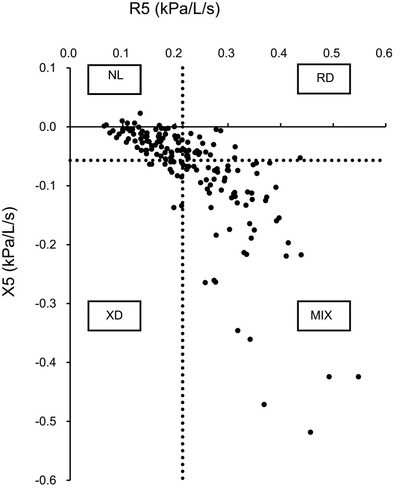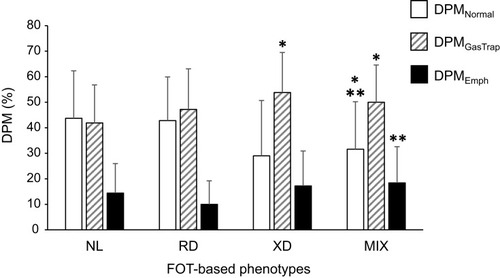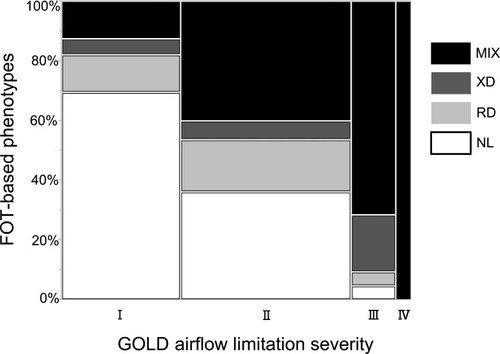Figures & data
Figure 1 Definition of the four novel FOT-based phenotypes in COPD patients. The vertical and horizontal dashed lines show the 3rd quartile value for R5 = 0.214 and X5 = −0.057, respectively, in the non-COPD smokers. Using these cut-off values, 164 COPD patients were divided into four phenotypes.

Table 1 Characteristics of the Study Subjects
Table 2 Comparison of FOT Indices Between COPD Patients and Non-COPD Smokers
Table 3 Characteristics, Pulmonary Functions, and CT Imaging Biomarkers Among FOT-Based Phenotypes
Figure 2 Distribution of the DPM parameters according to the FOT -based phenotypes. Bars show the data presented as the mean ± standard deviation of DPMNormal (white), DPMGasTrap (shaded), and DPMEmph (black). The numbers of subjects are in 52, 21, 8, and 46 in the NL, RD, XD, and MIX groups, respectively. The Wilcoxon rank-sum test was used to compare DPM parameters among groups. *p < 0.05 compared with NL; **p < 0.05 compared with RD.

Figure 3 Definition of the four novel FOT-based phenotypes by the GOLD classification of airflow limitation severity.

